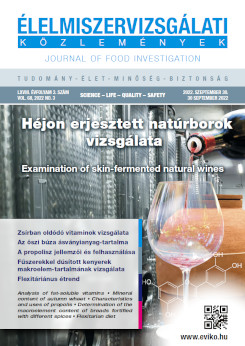Evolution of the mineral content of winter wheat in Hungary based on 30 years of measurement results
Main Article Content
Absztrakt
Nowadays, research related to food science and nutrition places more and more emphasis on the examination of the chemical, feeding and nutrition-physiology quality of various products of plant origin and the evolution of the changes. The attention of many researchers is focused on these quality issues related to nutritional values, and on how these characteristics have changed over the past few decades, thanks to the intensive agrotechniques applied and the available varieties.
In terms of our eating habits, cereals have been playing a central role in our everyday lives for thousands of years. In addition to providing energy thanks to their carbohydrate content, cereals can also be seen as a source of proteins, fibers, vitamins and, last but not least, minerals, as there are traditions of making and eating bread made from cereals both worldwide and in Hungary. Grain-based food production is part of a nation’s culture. By preparing our manuscript, our goal was to analyze the large number of samples available from different growing areas to obtain an answer to a question that arises in many people, how the mineral content of winter wheat, which is a staple food in our diet, has changed over the past decades. Thus, by demonstrating the combined effect of changing ecological conditions, the applied agrotechniques and biological foundations, we intend to provide an accurate picture of the evolution of the mineral content of cereals.

